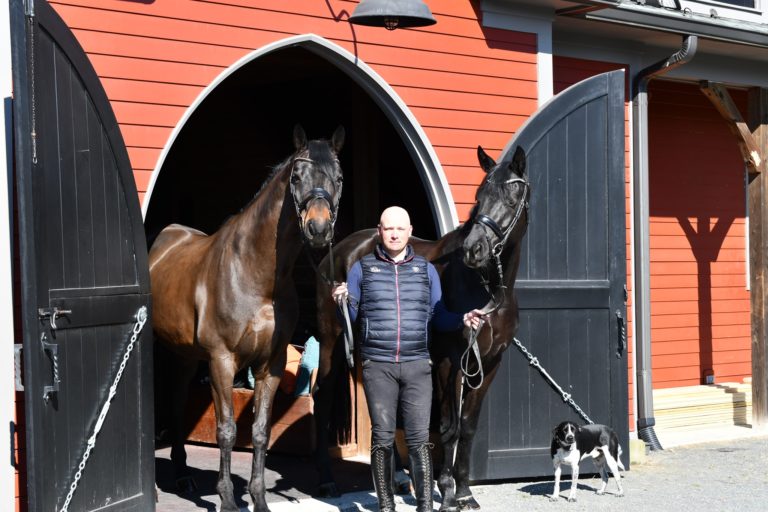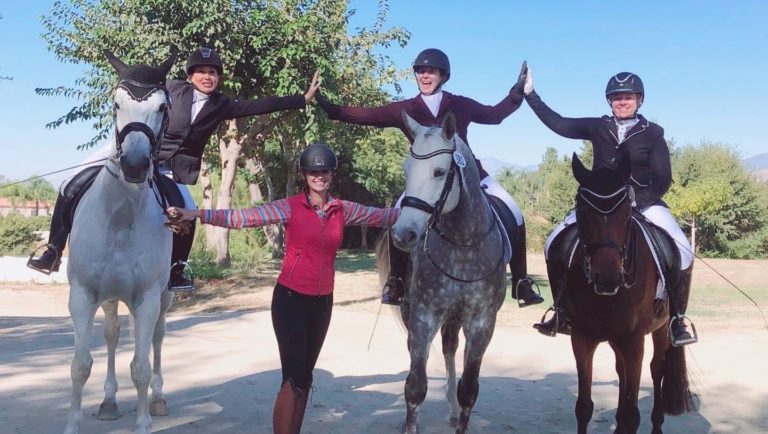
Can I Compete Down a Level After Coming Back From an Injury?
Q: I have a horse that is in rehab from a tendon injury. He was shown at Prix St. Georges before his injury. I really want to get back into the show ring but was wondering about etiquette in reference to returning to the show ring after injury. Can I show my horse down a couple of levels (Third Level) or show down a single level (Fourth Level) while he is coming back? Or is it improper to show down levels, and should I wait until he’s ready to be back at Prix St. Georges?
Name withheld by request
Kristi Wysocki
A: The first consideration as you decide when to show your horse after any injury is, of course, that he has completely recovered from the injury and is fit enough to pursue the level of interest, no matter what that level is. The higher levels of competition are more strenuous on a horse’s soft tissues so he may need more time prior to returning to training. Some injuries may permanently limit a horse’s ability to return to the higher levels of training. That should be discussed at length with your veterinarian prior to returning to training of any level.
The lateral work and extensions place higher degrees of strain on the horse’s legs than other dressage movements. I would highly recommend that the horse be completely healed and extremely fit prior to attempting either of these exercises, even when training at home. Many veterinarians recommend no turning at the trot or canter for a significant length of time during rehabilitation, thus minimizing the strain on the injured tendon. Lateral work and extensions are the last training allowed after the horse has become quite fit, perhaps even more fit than prior to the injury.
In regard to the level you compete at following an injury, there are no rules that limit competing at a lower level than you previously competed at, other than championship classes. The rules for each championship class can be found in the rules for that championship. But for regular open dressage competitions, choosing to ride at a lower level, or more importantly, needing to ride at a lower level than you did prior to the injury is perfectly legal and may be the smarter thing to do. That is simply showing that you are concerned for the welfare of your horse, which is the first priority, and that you are being cautious in your progress.
As far as which level to start competition at, remember that Fourth Level movements are very similar to Prix St. Georges movements, with a lesser degree of collection required. If the horse was competing at Prix St. Georges prior to the injury and you are considering a lower level of competition to reduce the physical stress for him, a level lower than Fourth may be warranted.
The final decision comes between you and your treating veterinarian. Factors including the location of the injury, severity of the injury, rate of healing, degree of healing, scarring, etc., all need to be weighed when determining if, when and at which level you return to the competition ring. I personally would err on the cautious side of time, regardless of the level I chose for my comeback with my equine partner. Remember, it’s just one horse show. There are many others to come.
Kristi Wysocki is an FEI 3* dressage judge, an FEI 4* Para-Dressage judge, a USEF “S” dressage judge, an “R” dressage sport horse judge and a USDF bronze, silver and gold medalist. She has trained and competed numerous horses from Training Level to Grand Prix with both local and national championship success. She serves on the USEF Dressage Committee and is the chair of the USDF Sport Horse Committee and a member of the USDF Sport Horse Seminar Faculty. Based in Elbert, Colorado, she trains and teaches dressage while managing a rehabilitation and therapy center for horses returning from injury and/or surgery.












